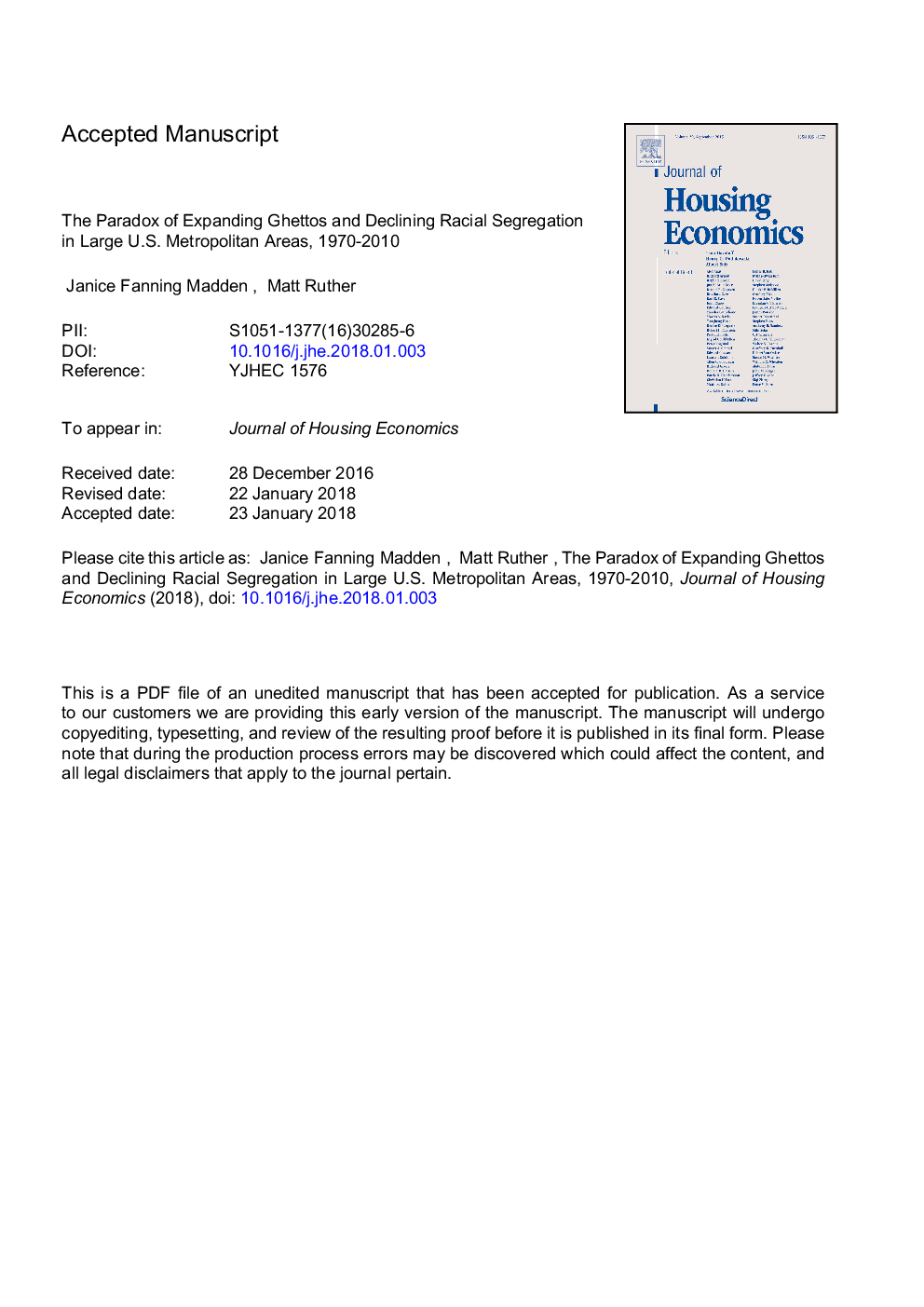| Article ID | Journal | Published Year | Pages | File Type |
|---|---|---|---|---|
| 7363702 | Journal of Housing Economics | 2018 | 37 Pages |
Abstract
This paper describes the dynamics of racial desegregation over forty years in 51 large US metropolitan areas, examining how the initial racial compositions of neighborhoods affect the later racial composition of the neighborhood and overall metropolitan area desegregation. After documenting integration arising from the increasing dispersion of black households across neighborhoods that were entirely, or disproportionately, non-black, we identify a stark exception: non-blacks do not move to neighborhoods that are over-90% black. The surprise is that, while the mean proportions of metropolitan black populations residing in such highly segregated neighborhoods decreased, the numbers of such neighborhoods actually increased in most metropolitan areas. The expansions of black neighborhoods, even as segregation decreases, pose challenges for local development and for continued racial integration.
Related Topics
Social Sciences and Humanities
Economics, Econometrics and Finance
Economics and Econometrics
Authors
Janice Fanning Madden, Matt Ruther,
